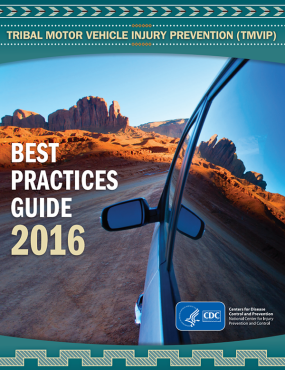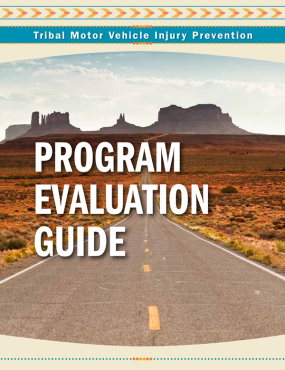Tribal Road Safety: Get the Facts
- Motor vehicle traffic crashes are a leading cause of death for American Indian and Alaska Native* people.1
- Motor vehicle traffic crash death rates among American Indian and Alaska Native children and youth ages 0–19 years were up to 8 times as high as those of other racial and ethnic groups.1
- Rates of motor vehicle traffic deaths among American Indian and Alaska Native adults ages 20 years or older were up to nearly 7 times as high as those of other racial and ethnic groups.1
Children
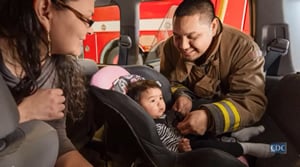
American Indian and Alaska Native children experience the highest unintentional injury death rates among all racial and ethnic groups in the United States.1 Motor vehicle traffic death rates among American Indian and Alaska Native children and youth ages 0–19 years were up to 8 times as high as those of other racial and ethnic groups.1
Men
In general, motor vehicle traffic death rates are higher among men than women. American Indian and Alaska Native people are at increased risk for injury, but American Indian and Alaska Native men are at especially high risk. Motor vehicle traffic death rates among American Indian and Alaska Native men ages 20 years and older are nearly twice that of women.1
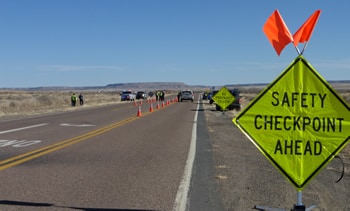
Protective Factors
American Indian and Alaska Native communities have innate strengths and resilience rooted in tribal culture and traditional ways of life. Communities may identify with strengths such as possessing wisdom passed down through generations, having pride in their community, sharing a sense of collective responsibility, being connected strongly to the past, and retaining or reclaiming traditional cultural practices.2 A community’s strengths can be drawn upon for interventions, and they can also be protective factors against negative outcomes for individuals.2,3,4 For example, having positive connections to family and community and having cultural beliefs valuing self-preservation are protective factors against alcohol or drug use.4
Risk Factors
American Indian and Alaska Native culture and traditions have been severely disrupted by colonialism, loss of land, and policies, such as assimilation, relocation, and tribal termination, resulting in historical trauma that contributes to risk factors for negative health outcomes. Risk factors that contribute to higher motor vehicle crash death rates include low restraint use (seat belt, car seat, and booster seat use) and high rates of impaired driving.
Low seat belt use
- The overall rate of seat belt use in Indian Country was 78% in 2022 according to the Bureau of Indian Affairs Indian Highway Safety Program.5 Although belt use varies greatly across reservations,6 seat belt use in Indian Country (78%)5 on average is lower than that of the United States overall (92%).7
- On reservations, almost 2 out of every 3 passenger vehicle occupants who died in crashes were not restrained at the time of the crash.8 In the United States overall, 1 out of every 2 occupants were not restrained.9†
Low car seat and booster seat use
- American Indian and Alaska Native car seat and booster seat use rates are lower than that of other racial and ethnic groups. Among children ages 8 years and younger who died in passenger vehicle crashes, almost half of American Indian and Alaska Native children were not restrained. In the United States overall, about a third were not restrained.10† However, car seat and booster seat rates can vary greatly across tribal communities.11,12
Alcohol-impaired driving
- American Indian and Alaska Native people have the highest alcohol-impaired driving death rates among all racial and ethnic groups.13 Alcohol-impaired driving death rates among American Indian and Alaska Native people are 2 to 11 times as high as among other racial and ethnic groups in the United States.13
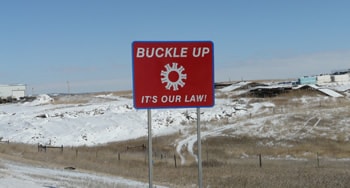
Proven strategies to reduce motor vehicle crashes, injuries, and deaths are well established. Strategies to prevent crashes include graduated drivers licensing laws, blood alcohol concentration (BAC) laws, sobriety checkpoints, and ignition interlocks for those convicted of driving while intoxicated. Increasing car seat and booster seat use through child passenger restraint laws that require car seat and booster seat use for all children until at least age 9 years, increasing seat belt use through primary enforcement seat belt laws that cover all seating positions, and high visibility enforcement are proven ways to prevent crash-related injuries and deaths. These strategies can be successfully tailored to tribal communities.
Indigenous Knowledge
In evaluating strategies for tribal road safety, it is important to include Indigenous Knowledge, which is “a body of observations, oral and written knowledge, innovations, practices, and beliefs developed by Tribes and Indigenous Peoples through interaction and experience with the environment.” Indigenous Knowledge is “applied to phenomena across biological, physical, social, cultural, and spiritual systems” and includes “extensive observations, lessons, and skills passed from generation to generation.”
A Memorandum for Heads of Federal Departments and Agencies in November 2022 stated that “Indigenous Knowledge is a valid form of evidence for inclusion in Federal policy, research and decision making. Indigenous Knowledge and other forms of knowledge do not depend on each other for validation, and each system can support the insights of the other.”
Source: Guidance for Federal Departments and Agencies on Indigenous Knowledge [PDF – 46 pages]
Car seat and booster seat use
- Car seat use reduces the risk for injury in a crash by 71–82% for children, when compared with seat belt use alone.14,15
- Booster seat use reduces the risk for serious injury by 45% for children ages 4–8 years, when compared with seat belt use alone.16
- Car seat and booster seat distribution plus education programs can increase restraint use.17,18,19 These programs help parents and caregivers get new, unused car seats or booster seats and learn how to properly install and use them.17,18,19 These programs often include hands-on demonstrations which can help increase proper installation and use.
-
- Incentive and education programs reward parents or children with coupons or other prizes for correctly using car seats and offer educational print materials and videos for parents and caregivers17,18,20
- Child restraint laws require children riding in vehicles to be buckled up in approved restraints such as car seats, booster seats, or seat belts appropriate for their age, weight, and height. These laws are effective for increasing restraint use and reducing child deaths and injuries.17,20,21
-
- Strengthening current laws with booster seat provisions that require children who have outgrown car seats to use booster seats until at least age 9 helps reduce injuries and deaths.22–28
- Short-term, high-visibility enforcement programs can enhance the effectiveness of child restraint laws, especially if they include broad media coverage.17,20 These programs are often similar to or conducted in combination with seat belt use programs like Click It or Ticket; however, they should be conducted in an equitable and culturally-centered manner (see example below).
Example from the Tribal Motor Vehicle Injury Prevention (TMVIP) Best Practices Guide [PDF – 132 pages]: Several Tribes in California and Arizona, as well as the California Highway Patrol, have used a modified version of the Safe Native American Passengers (SNAP) Course to educate law enforcement personnel about the importance of child safety seat use and enforcing child safety seat use laws. This gives officers the tools to address CPS during traffic safety stops.
Seat belt use
- Seat belt use reduces the risk for death and serious injury by about half for older children and adults.29
- There is strong evidence that primary enforcement seat belt laws that cover all seating positions and high visibility enforcement are effective at increasing seat belt use.20,30 Prior work has explored how to conduct this in a culturally centered manner in some tribal communities.
Example from the TMVIP Best Practices Guide [PDF – 132 pages]: At a regional health corporation in rural Alaska, the TMVIP program developed a ‘Click-It for a Movie Ticket’ campaign to increase occupant restraint use. In collaboration with the local movie theater (a popular destination in this rural Alaskan outpost), and local law enforcement, the TMVIP coordinator was able promote important traffic safety messages, provide an opportunity for law enforcement to do more than issue tickets, and reward community members for safe driving behaviors. This approach to identify incentives that are locally valued can be applied in other tribal communities.
Impaired driving
Proven measures to reduce alcohol-impaired driving include:
- Implementing The Community Guide supported strategies that can reduce binge drinking.31
- Enforcing blood alcohol concentration (BAC) laws, minimum legal drinking age laws, and zero tolerance laws for drivers younger than 21 years old.20,32 These should be conducted in an equitable and culturally-centered manner.
- Using publicized sobriety checkpoints. Checkpoints can reduce alcohol-related crash deaths by 9%.33
- Requiring ignition interlock use for all people convicted of alcohol-impaired driving, starting with their first offense.34 Additionally, incorporating alcohol use disorder assessment and treatment into interlock programs shows promise in reducing repeat offenses once interlocks are removed.35
- Providing Drug Recognition Expert or Advanced Roadside Impaired Driving Enforcement program training to law enforcement.20
Example from the TMVIP Best Practices Guide [PDF – 132 pages]: Previously, the San Carlos Apache Tribe conducted sobriety checkpoints and a comprehensive media campaign. A total of 38 public service announcements and 21 community media events were conducted, combined with 21 sobriety checkpoints. They observed a 20% reduction in MVCs involving injuries or deaths, a 33% reduction in night-time crashes, and a 27% reduction in overall police-reported crashes.
Teen drivers
- There are proven methods to help prevent teen crashes. Graduated driver licensing (GDL) systems enable new drivers to progressively gain driving experience and driving skills under lower risk conditions by granting driving privileges in 3 stages.
- Research indicates that GDL systems are associated with reductions of about 19% for injury crashes and 21% for fatal crashes for 16-year-olds.36 Best practice GDL systems often include the following components:37–40
- Stage 1: Learner’s Permit
- Minimum age of 16 to obtain a learner’s permit
- A requirement to have a learner’s permit for at least 12 months
- At least 70 supervised practice hours
- Stage 2: Intermediate/Provisional License
- No teen or young adult passengers
- Restrictions on nighttime driving (from 9 or 10 pm until 5 am, or sometimes longer)
- Stage 3: Full Licensure
- Minimum age of 18 to obtain a full license
- Stage 1: Learner’s Permit
* On this webpage, statistics are reported for non-overlapping racial and ethnic groups. All people of Hispanic origin are grouped together, so, for example, statistics for American Indian and Alaska Native people and White people are for non-Hispanic persons.
† These percentages are based on passenger vehicle occupants for which restraint status was known.
- Centers for Disease Control and Prevention (CDC). WISQARS — Web-based Injury Statistics Query and Reporting System, 2018–2021 data. Atlanta, GA: U.S. Department of Health and Human Services, Centers for Disease Control and Prevention, National Center for Injury Prevention and Control; 2023.
- Substance Abuse and Mental Health Services Administration (SAMHSA). Culture Card – A guide to Build Cultural Awareness: American Indian and Alaska Native [PDF – 4 pages]. Washington, DC: U.S. Department of Health and Human Services, Substance Abuse and Mental Health Services Administration, Centers for Disease Control and Prevention, Indian Health Service, and Centers for Medicare & Medicaid Services; 2009.
- American Psychiatric Association. Mental Health Disparities: American Indians and Alaska Natives [PDF – 4 pages]. 2017.
- Indian Health Service. Protective Factors. Rockville, MD: U.S. Department of Health and Human Services, Indian Health Service.
- Bureau of Indian Affairs, Indian Highway Safety Program. FY 2022 Annual Report [PDF – 77 pages]. Albuquerque, NM: U.S. Department of the Interior, Bureau of Indian Affairs, Bureau of Indian Affairs, Office of Justice Services; 2023.
- Chaffe RHB, Solomon MG, Leaf WA. 2006 Seat Belt Use Estimate for Native American Tribal Reservations (Report No. DOT HS 810 967). Washington, DC: U.S. Department of Transportation, National Highway Traffic Safety Administration; 2008.
- Boyle, L. Seat belt use in 2022 – Overall results (Traffic Safety Facts Research Note. Report No. DOT HS 813 407). Washington, DC: U.S. Department of Transportation, National Highway Traffic Safety Administration, National Center for Statistics and Analysis; 2023.
- National Highway Traffic Safety Administration. Native American Traffic Safety Facts FARS 2016–2020. Washington, DC: U.S. Department of Transportation, National Highway Traffic Safety Administration, National Center for Statistics and Analysis.
- National Center for Statistics and Analysis. Summary of motor vehicle crashes: 2020 data (Traffic Safety Facts. Report No. DOT HS 813 369). Washington, DC: U.S. Department of Transportation, National Highway Traffic Safety Administration, National Center for Statistics and Analysis; 2022.
- National Highway Traffic Safety Administration (NHTSA). Fatality Analysis Reporting System (FARS), 2016–2020 data. Washington, DC: U.S. Department of Transportation, National Highway Traffic Safety Administration, National Center for Statistics and Analysis; November 2023.
- Billie H, Crump CE, Letourneau RJ, West BA. Child safety and booster seat use in five tribal communities, 2010–2014. J Safety Res. 2016; 59:113–117. Doi:10.1016/j.jsr.2016.09.002
- Lapidus JA, Smith NH, Lutz T, Ebel BE. Trends and correlates of child passenger restraint use in six Northwest Tribes: The Native children always ride safe (Native CARS) project. Am J Public Health. 2013;103(2);355–361. doi:10.2105/AJPH.2012.300834
- National Highway Traffic Safety Administration (NHTSA). Unpublished 2016–2020 data from the Fatality Analysis Reporting System (FARS). Washington, DC: U.S. Department of Transportation, National Highway Traffic Safety Administration, National Center for Statistics and Analysis; August 2023.
- Arbogast KB, Durbin DR, Cornejo RA, Kallan MJ, Winston FK. An evaluation of the effectiveness of forward facing child restraint systems. Accid Anal Prev. 2004;36(4):585–589. doi:10.1016/S0001-4575(03)00065-4
- Zaloshnja E, Miller TR, Hendrie D. Effectiveness of child safety seats vs safety belts for children aged 2 to 3 years. Arch Pediatr Adolesc Med. 2007;161(1):65–68. doi:10.1001/archpedi.161.1.65
- Arbogast KB, Jermakian JS, Kallan MJ, Durbin DR. Effectiveness of belt positioning booster seats: an updated assessment. Pediatrics. 2009;124(5):1281–1286. doi:10.1542/peds.2009-0908
- Zaza S, Sleet DA, Thompson RS, Sosin DM, Bolen JC; Task Force on Community Preventive Services. Reviews of evidence regarding interventions to increase use of child safety seats. Am J Prev Med. 2001;21(4 Suppl):31–47. doi:10.1016/s0749-3797(01)00377-4
- Ehiri JE, Ejere HO, Magnussen L, Emusu D, King W, Osberg JS. Interventions for promoting booster seat use in four to eight year olds traveling in motor vehicles. Cochrane Database Syst Rev. 2006;2006(1):CD004334. doi:10.1002/14651858.CD004334.pub2
- Glerum KM, Zonfrillo MR, Fleisher L, McDonald CC. Systematic review of child restraint system interventions (2007–2018). Traffic Inj Prev. 2019;20(8):866–872. doi:10.1080/15389588.2019.1666372
- Venkatraman V, Richard CM, Magee K, Johnson K. Countermeasures That Work: A Highway Safety Countermeasures Guide for State Highway Safety Offices, 10th Edition, 2020 (Report No. DOT HS 813 097) [PDF – 641 pages]. Washington, DC: U.S. Department of Transportation, National Highway Traffic Safety Administration; 2021.
- Sartin EB, Lombardi LR, Mirman JH. Systematic review of child passenger safety laws and their associations with child restraint system use, injuries and deaths. Inj Prev. 2021;27(6):577–581. doi:10.1136/injuryprev-2021-044196
- Shaw KM, West B, Kendi S, Zonfrillo MR, Sauber-Schatz E. Urban and rural child deaths from motor vehicle crashes: United States, 2015–2019. J Pediatr. 2022;250:93–99. doi:10.1016/j.jpeds.2022.07.001
- Benedetti M, Klinich KD, Manary MA, Flannagan CA. Predictors of restraint use among child occupants. Traffic Inj Prev. 2017;18(8):866–869. doi:10.1080/15389588.2017.1318209
- West BA, Dorigo LL, Mattick KA, Yellman MA, Sauber-Schatz EK. Booster Seat Planning Guide. U.S. Department of Health and Human Services, Centers for Disease Control and Prevention, National Center for Injury Prevention and Control; 2021.
- Farmer P, Howard A, Rothman L, Macpherson A. Booster seat laws and child fatalities: a case-control study. Inj Prev. 2009;15(5):348–350. doi:10.1136/ip.2008.021204
- Brixey SN, Corden TE, Guse CE, Layde PM. Booster seat legislation: does it work for all children?. Inj Prev. 2011;17(4):233–237. doi:10.1136/ip.2010.029835
- Mannix R, Fleegler E, Meehan WP III, Schutzman SA, Hennelly K, Nigrovic L, Lee LK. Booster seat laws and fatalities in children 4 to 7 years of age. Pediatrics. 2012;130(6):996–1002. doi:10.1542/peds.2012-1058
- Eichelberger AH, Chouinard AO, Jermakian JS. Effects of booster seat laws on injury risk among children in crashes. Traffic Inj Prev. 2012;13(6):631–639. doi:10.1080/15389588.2012.660663
- Kahane CJ. National Highway Traffic Safety Administration (NHTSA). Lives Saved by Vehicle Safety Technologies and Associated Federal Motor Vehicle Safety Standards, 1960 to 2012 – Passenger Cars and LTVs – With Reviews of 26 FMVSS and the Effectiveness Of Their Associated Safety Technologies in Reducing Fatalities, Injuries, and Crashes (Report No. DOT HS 812 069). Washington, DC: U.S. Department of Transportation, National Highway Traffic Safety Administration; 2015.
- Dinh-Zarr TB, Sleet DA, Shults RA, et al. Reviews of evidence regarding interventions to increase the use of safety belts. Am J Prev Med. 2001; 21(4 Suppl):48–65. doi:10.1016/s0749-3797(01)00378-6.
- Guide to Community Preventive Services. Excessive Alcohol Consumption. 2023.
- Guide to Community Preventive Services. CSPTF Findings for Motor Vehicle Injury: Reducing Alcohol-Impaired Driving. 2021.
- Bergen G, Pitan A, Qu S, Shults RA, Chattopadhyay SK, Elder RW, Sleet DA, Coleman HL, Compton RP, Nichols JL, Clymer JM, Calvert WB, Community Preventive Services Task Force. Publicized sobriety checkpoint programs: A Community Guide systematic review. Am J Prev Med. 2014;46(5):529–539. doi:10.1016/j.amepre.2014.01.018.
- Guide to Community Preventive Services. Motor Vehicle Injury – Alcohol-Impaired Driving: Ignition Interlocks. 2021.
- Voas RB, Tippetts AS, Bergen G, Grosz M, and Marques P. Mandating treatment based on interlock performance: evidence for effectiveness. Alcohol Clin Exp Res. 2016;40(9):1953–1960. doi:10.1111/acer.13149
- Masten SV, Thomas FD, Korbelak KT, Peck RC, Blomberg RD. Meta-analysis of GDL laws (Report No. DOT HS 812 211) [PDF – 93 pages]. Washington, DC: U.S. Department of Transportation, National Highway Traffic Safety Administration. November 2015.
- Ouimet MC, Pradhan AK, Brooks-Russell A, Ehsani JP, Berbiche D, Simons-Morton BG. Young Drivers and Their Passengers: A Systematic Review of Epidemiological Studies on Crash Risk. J Adolesc Health. 2015;57(1 Suppl):S24–35.e6. doi:10.1016/j.jadohealth.2015.03.010
- Insurance Institute for Highway Safety (IIHS). Graduated Licensing Calculator. Arlington, VA: Insurance Institute for Highway Safety & Highway Loss Data Institute; 2022.
- Steadman M, Bush JK, Thygerson SM, Barnes MD. Graduated driver licensing provisions: an analysis of state policies and what works. Traffic Inj Prev. 2014;15(4):343–348. doi:10.1080/15389588.2013.822493
- Curry AE, Metzger KB, Williams AF, Tefft BC. Comparison of older and younger novice driver crash rates: Informing the need for extended Graduated Driver Licensing restrictions. Accid Anal Prev. 2017;108:66–73. doi:10.1016/j.aap.2017.08.015
